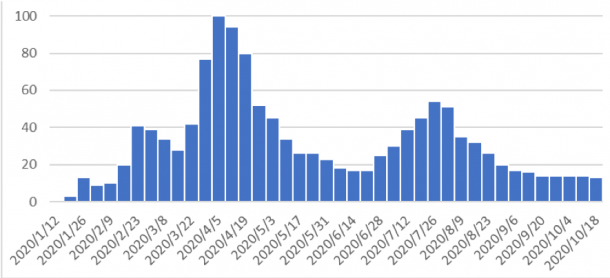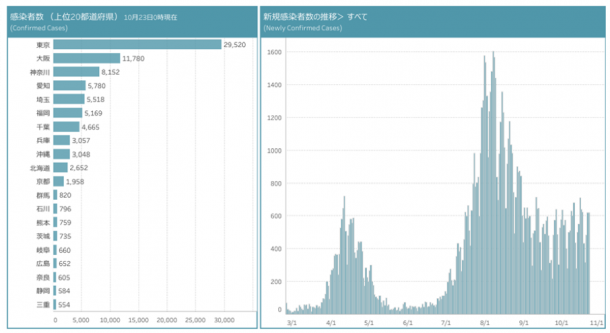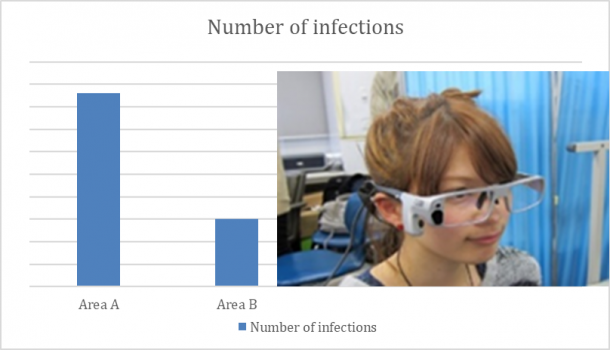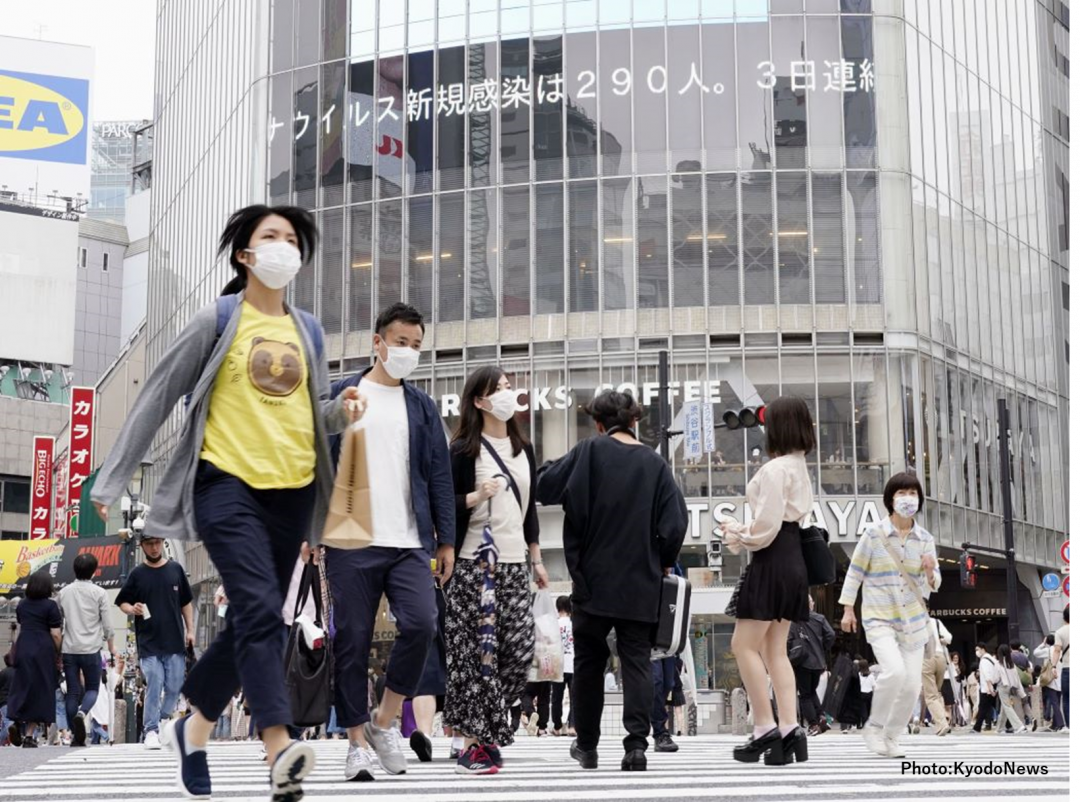Psychology of Attention to Covid-19 in Society
Tue, Nov 17, 2020-
Tags

Professor Kazuhisa Takemura
Waseda University Faculty of Letters, Arts and Sciences
As I write this article in October 2020, the novel coronavirus disease (Covid-19) is still a global pandemic. The infection has spread this year in Japan also, and the Japanese government declared a state of emergency in April. Most citizens have lived under strict restraints, and many students, at Waseda University and elsewhere, are taking classes mainly online, with only a few returning to in-person sessions. Amid the pandemic, governments, municipalities, and all kinds of organizations across society are engaging in risk communications. This piece is a psychological examination of how people look at this disease, or of the social attention to Covid-19, based on my previous research. It also includes my opinions on risk communication going forward.
Psychology and cognitive model of social attention to infectious disease
People’s judgements about changes in social phenomena, for instance, crime and suicide, and in economic phenomena, such as business conditions, often differ from actual statistics. A tendency for judgements of various risk events has been found to differ from actual statistics [1], and the same can be said for risk perception of Covid-19. Scientific journals such as Science Advances and Science have recently begun publishing research on the psychological and behavioral responses to Covid-19 [2,3].
In our research too, we have proposed models that point to one possible explanation of how Covid-19 and other social phenomena are seen [4,5,6]. The fundamental hypothesis is that the level of attention given to social phenomena is determined by changes in not only by their values but also by spatial-temporal indicators (speed, acceleration, etc.).
That is, not only is the attention given to phenomena such as Covid-19 constantly changing, but it is thought to be affected by the rate of change, and the attention rate Pi (t) for the event i at time t is determined by comparison to an alternative event j. However, it is a random variable determined by the magnitude relation of the psychophysical quantity U for detecting a change to a certain event. Further, the psychophysical quantity U is thought to be defined by the social event’s current quantitative indicator, speed, acceleration, and an individual’s tendency, as well as a probabilistic error term.
Thinking simply, a cognitive model of two phenomena would be Pi (t)=p (Ui (t)>Uj (t)). We are developing a mathematical model of this kind of cognitive model, considering correspondence with mathematical models of infectious disease and comparison with other cognitive models, and developing a behavior modification model using time factors and social factors.
Let me explain this cognitive model in more detail. With the attention rate of an event at time as , and as the psychophysical quantity of impact of event , the equation of Ui (t) and Uj (t) is as follows:
Ui (t)=αxi (t)+βvi (t)+γai (t)+di +ϵi
Then, by the magnitude relation of psychophysical quantity, the probability that Ui (t) exceeds Uj (t) is the attention rate of the event i.
Uj (t)=αxj (t)+βvj (t)+γaj (t)+dj +ϵj
*xi (t) is the physical quantity of the event i at time t; vi (t) is the speed (velocity) of change of the physical quantity of the event i at time t; ai (t) is the rate of acceleration of change in the physical quantity of the event i at time t.
*α, β, γ represent the parameters of variables of each.
*di represents an individual’s tendency (bias), and ϵi the error term of a judgement.
The core of this cognitive model is that the attention rate of social events such as Covid-19 depends on objective data, but also on the events’ history and pattern of change. For example, it can be predicted that people will give social attention when infection cases rise suddenly, even if the absolute numbers are not very large.
Takeaways from analysis of social attention towards Covid-19
Based on the model above, we used the daily numbers of positive PCR Covid-19 test results published by the Ministry of Health, Labour and Welfare (https://www.mhlw.go.jp/stf/covid-19/open-data.html) from January 16 to July 31, 2020, and analyzed data on social attention towards Covid-19 [6]. This was compared to the number of articles in the Asahi Shimbun newspaper article database, “Kikuzo II,” which matched the search query. After testing various search terms, “corona(virus),” was chosen. The search was performed on August 1 from January 9 to July 31, 2020, and internet search volume data were obtained from Google Trends (https://trends.google.com/). The analysis showed that the actual search volume was influenced by the numbers of positive tests and news articles, as well as by their speed and acceleration of change. It also suggested that the actual numbers of positive tests influenced the search volume more than the number of news articles. These results suggest that people are watching positive test numbers and their fluctuation, which differs from previous analysis of Covid-19 and other social phenomena [4,5].
Looking at fluctuations of reported positive tests and Google Trends up to recent days (Figure 1, 2), it is clear that search volume has not increased as much as positive tests, suggesting that people’s interest is waning.

Figure 1: Covid-19 infections (Graph by Nippon TV from health ministry data) https://www.news24.jp/archives/corona_map/index3.html

Figure 2: Searches for “Corona” (Created on Google Trends) https://trends.google.co.jp/trends/?geo=JP
Beyond this analysis, we created an experiment with decision points related to cognition of infectious disease and behavior. Analysis of the process of decision-making by monitoring information acquisition, analysis of eye movements, and choice experiments (Figure 3) suggest that the speed and acceleration terms in the cognition model influence decision outcomes.

Figure 3: Cognition model experiment using eye-tracking
Note: Decision task is to choose which of the area is more dangerous. The information provided to the participants was changing during the experiment controlling the velocity and the acceleration.
Commentary on risk communication
We have proposed a model indicating one possible explanation of how people pay attention to Covid-19. The fundamental hypothesis is that attention rates of social phenomena are determined by indicators of change in time and space as well as statistical values. This research must be further explored, and there are methodological limitations, but analysis suggests that social attention toward Covid-19, as seen from information searches, is affected by the presentation of the information and its sequence pattern, not only by objective indicators. This tells me that these factors must be duly considered in relation to risk communication for Covid-19 as well.
Governments and the media broadcast detail the numbers of infected and dead from Covid-19 but hardly provide any information comparing its risks to other risks such as other diseases or accidents. Providing comparison to other diseases or accidents is a principle of normal risk information, but in this case, it is rarely followed. This creates a bias in people’s risk perception and may be encouraging prejudice and discrimination. People’s perceptions of risk and decision-making do not always correspond to objective probabilities [1, 7]. New risks especially tend to cause extreme responses [1]. With the current problem of Covid-19 also, comparing to other diseases or accidents, its risk is overestimated in people’s judgement, and there may well be a bias in their decision-making than usual [8].
Around risk communication, the first keys are reliable information sources and guidance from scientific experts who are independent and don’t favor the government. Currently, government officials do not record minutes of meetings, do not provide reasonable and enough explanation of the scientific basis when requesting self-restraint and other measures, and only try to persuade people with the authority of scientists. Hence, no matter how much detailed information is released, people will not be moved if risk communication is not improved.
As experts don’t always agree, it is important to hear the views of various experts. However, the government doesn’t seem to be considering the diversity of experts. Furthermore, other experts seem to avoid criticizing colleagues who are connected to the government. This may be distorting their independence, increasing the need for independent critique and recommendations from other researchers in the same field. The Science Council of Japan also, a government body that is supposed to provide policy recommendations and suggestions independent of the government, would seem obliged to provide evaluation and concrete recommendations about the government’s recent Covid-19 policies, including the 80% stay-at-home guidance, and its risk communication.
In several cases, the government and government-related experts and media have not communicated well the scientific basis of its policies and recommendations to the people regarding the risk information and risk evaluation of Covid-19, leaving much room for improvement going forward. As for universities, where science and academics are consummated, we must not, fearing public opinion, maintain teaching and research structures that are overly subservient to cognitive responses or emotional reactions.
References
[1] Slovic, Paul: Perception of risk. Science, Vol. 236, Issue 4799, pp. 280-285, 1987.
doi: https://doi.org/10.1126/science.3563507
[2] Holman, Alison, et al.: The unfolding COVID-19 pandemic: A probability-based, nationally representative study of mental health in the United States, Science Advances 14 Oct 2020: Vol. 6, no. 42, eabd5390
doi: https://doi.org/10.1126/sciadv.abd5390
[3] Metcalf, Jessica, et al.: Mathematical models to guide pandemic response, Science 24 Jul 2020, Vol. 369, Issue 6502, pp. 368-369
doi: https://doi.org/10.1126/science.abd1668
[4] Takemura, K., Hatori, T., Fujii, S.: Mathematical model and psychometric analysis of change detection and attention rate for social event, Proceedings of the 50th Annual Conference of The Japanese Society of Social Psychology, 2009. pp.172-173.
[5] Takemura, K., Hatori, T., Fujii, S.: Experiment and psychometric analysis of change detection and attention rate for social event, Proceedings of the 51th Annual Conference of The Japanese Society of Social Psychology, 2010. pp.126-127.
[6] Takemura, K., Tamari, Y., Ideno, N.: Psychological factors of social attention to Covid-19: Examination of velocity and acceleration of number of infections, Proceedings of the 11th Transdisciplinary Federation conference, Institute of Statistical Mathematics, 2020(in press).
[7] Takemura, Kazuhisa. Behavioral Decision Theory, in Oxford Research Encyclopedia of Politics, Oxford: Oxford University Press, 2020.
doi: https://doi.org/10.1093/acrefore/9780190228637.013.958
[8] Committee of Infrastructure Planning and Management, Japan Society of Civil Engineers: Survey and report on Covid-19, Oct 22, 2020.
https://jsce-ip.org/2020/10/22/covid19-survey/
Profile
Kazuhisa Takemura
Professor, Waseda University Faculty of Letters, Arts & Sciences
Concurrent positions: Director, Center for Decision Research, Waseda University; Researcher, Research Institute for Science and Engineering, Waseda University
Previous positions include: Assistant Professor, Institute of Policy and Planning Sciences, University of Tsukuba;
Fulbright Senior Scholar, Department of Social and Decision Sciences, Carnegie Mellon University
Education: Ph.D. (System Science) Tokyo Institute of Technology; Ph.D. (Medicine), Kitasato University
Professional affiliations: Board Member, Editorial Board, Behaviormetric Society of Japan; Board Member, Japanese Society of Social Psychology; Board Member, Editorial Board, Japanese Society of Kansei Engineering; Editorial Board, Association of Behavioral Economics and Finance; Board Member, Editor in chief, Japanese Society of Theoretical Psychology; Fellow, International Association of Applied Psychology
Major publications:
- Takemura, Kazuhisa. Behavioral Decision Theory, in Oxford Research Encyclopedia of Politics, Oxford: Oxford University Press, 2020. doi: https://doi.org/10.1093/acrefore/9780190228637.013.958
- Takemura, Kazuhisa. Foundations of Economic Psychology: A Behavioral and Mathematical Approach, New York: Springer, 2019.
- Takemura, Kazuhisa. Behavioral Decision Theory: Psychological and Mathematical Descriptions of Human Choice Behavior, Tokyo: Springer, 2014.
- Takemura, Kazuhisa. Society, Group, and Family psychology, Tokyo: Tomi Shobo, 2018.
- Takemura, Kazuhisa, Fujii, Satoru. Prescription for Decision-making, Tokyo: Asakura Shobo, 2015.
- Takemura, Kazuhisa. Behavioral Decision Theory, Tokyo: Nippon Hyoronsha, 2009.














